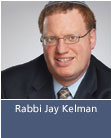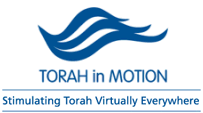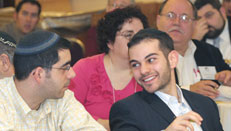 |
 The central theme of the book of Exodus is the formation of the Jewish people as a nation. The group of 70 individuals who descended to Egypt quickly became a nameless, faceless people and were easily taken advantage of by the Egyptian people. As the spiral of assimilation worsened, a great leader emerged who under the direction of G-d redeemed them and led them to Sinai where the Jewish nation were given their historic mission. If exile and redemption is the theme of Shemot what are the details regarding the construction of the tabernacle doing in Sefer Shemot ? Would they not be more appropriately recorded in the book of Leviticus, which has as its central theme the sacrifices that were brought to the temple? Furthermore, the latter part of the Sefer Vayikra would seem more appropriate in Sefer Shemot . The end of Vayikra contains such laws as those relating to Passover, remembering the exodus, the treatment of slaves including granting them freedom in the jubilee year and the command to love our neighbours as ourselves. The book ends with the verse "these are the commandments that G-d gave Moses for the Israelites at Mount Sinai". Surely a modern day editor would have transferred parts of Sefer Vayikra to Sefer Shemot and would have put the construction of the mishkan as part of Sefer Vayikra ? Why are the various themes separated?
It appears that the structure of the chumash is teaching us an important lesson regarding the interconnectedness between our relationship with man and our relationship with G-d. The laws of the mishkan are surrounded by laws regarding our obligations to man. Parshat Mishpatim which immediately precedes Parshat Terumah details the laws which guarantee the proper functioning of society. It details such laws as the setting up of the court system, laws of damages, granting loans to the needy, showing special sensitivity to non-residents, and spousal obligations. Parshat Terumah has as its central theme "And you shall make for me a sanctuary and I will dwell among them" (25:8). Before we can enter G-d's dwelling place we must make sure that our dealings with our fellow man are at the highest standards. If not, we are not welcome there. As we all know, when we exhibited sinaat chinam , internal discord, G-d expelled us from his home. But if our relationship with our fellow man must be exemplary before we enter the mishkan it must get even better after we worship there. Following the Torah's description of the building of the mishkan and the sacrifices that are to be brought there, it proceeds to tell us to "love our neighbour as ourselves" which represents the pinnacle of being an observant Jew. The mishkan must be surrounded by the laws of interpersonal relationships. It is by observing these laws that we are serving G-d. And we must look to G-d to tell us how to deal with man. It is no coincidence that lost items were brought to the Temple where the rightful owner could claim them.
A synagogue is known as a mikdash me'at - a miniature temple. Just as the mishkan must foster better relationships amongst all people, (the temple is "house of prayer for all the nations") so too our shuls must be a place where we improve as human beings. A shul is known as a Beit Knesset , a place of gathering. It is not only a place to come and pray, important as that is, it must always be cognizant of its primary purpose of being a gathering place for Jews.
Outside of the very small minority of very committed Jews, synagogue attendance is on the decline. Unfortunately prayer does not interest the masses. Those synagogues which have managed to attract people have done so because they offer a warm friendly environment where Jews can come together. This is a necessary ingredient as we enter the mishkan to serve G-d. We must strive to ensure that our shuls offer the kind of activities - educational,. social and inspirational - that will want to make Jews come here and be together. This is the way to build a Mikdash me'at dedicated to the service of G-d. Shabbat Shalom!
|
 |








